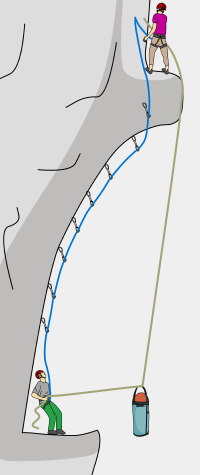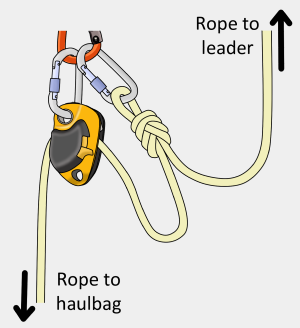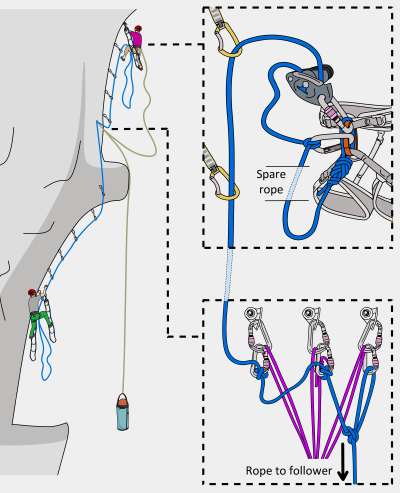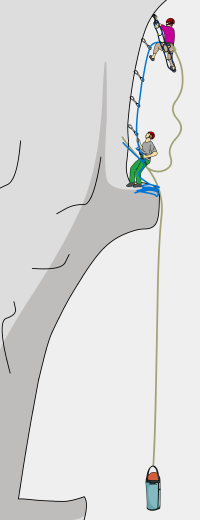Check out the full big wall video course, or download the e-book.
To speed up the ascent, some climbers prefer to lead in blocks (the same person leads several consecutive pitches), with the leader short-fixing (self-belaying the first section of each pitch). Short-fixing can be very dangerous if not performed correctly and is not recommended for beginners.
Advantages
- Faster
- A faster ascent means a lighter haulbag
Disadvantages
- Self-belaying is more difficult and dangerous
- More difficult to deal with a stuck haulbag
Short Fixing - How it Works
The leader will be able to climb as far as they have rope (and rack) available. For example, if the previous pitch was 40m, and the lead rope is 60m, the leader will be able to climb 20m (minus rope used up in various knots). Ideally, the leader will have climbed this extra distance by the time the follower has cleaned the pitch. There are a few different ways to set up the anchor for short-fixing. One is described below.
Step 1
When the leader finishes a pitch, they fix the lead rope and set up the haul, just the same as normal. The follower then releases the haulbag.

Step 2
The leader adds a backup to the haul rope. This backup will remain while the haul is unattended.
The leader continues to trail the haul rope on the next pitch.

Step 3
The leader self-belays by attaching their GriGri to the rope, and attaching the rope to the anchor as shown. The backup knot is important because GriGri’s do not always auto-lock.
This backup knot will need to be re-tied as the leader climbs – always tie a new backup before removing the old one. If the leader falls, the GriGri (or the backup knot) will hold the fall.

Step 4
When the follower arrives at the anchor, they put the leader on belay and pass up gear using the haul rope (if there is enough rope – the follower may need to haul a bit first). Be aware that there might be a lot of spare lead rope in the system at this point. To keep this danger to a minimum, the leader can belay the rope through at the same time as the belayer takes it in.
Step 5
The leader removes their GriGri and backup knot and continues climbing as normal. The belayer can then re-sort the lead rope so the full length is available. The belayer hauls and belays while the leader climbs.
Note
On terrain where the haulbag is likely to get stuck, it is recommended that the leader hauls the bag before short-fixing the next pitch.






